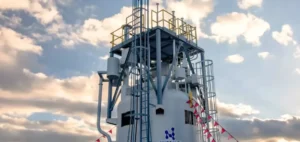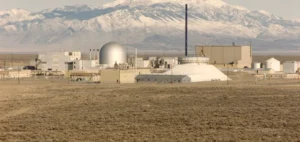Reactor 1 at the Cattenom nuclear power plant (Moselle), shut down for inspections, will have to undergo repairs because of possible defects in welds attributed to the phenomenon of stress corrosion, the nuclear safety authority (ASN) said Friday.
The ASN thus specifies the reasons for the extension of the shutdown of this reactor, announced Thursday evening by EDF, with Cattenom 3, Penly 2 and Chooz B1.
Cattenom 1, which was initially scheduled to be restarted on November 17, has been postponed to February 26, 2023, according to EDF.
Checks carried out on Cattenom Reactor 1, “near the welds likely to be most affected, have revealed indications of stress corrosion cracking”, two of which “have significant dimensions, with maximum depths of 4.7 and 6.1 mm”, said the ASN.
By “indication”, the ASN refers to a signal (typically an echo for ultrasound inspections) highlighting the possible presence of a defect in the inspected material.
The authority examined, with the support of the IRSN (Institute for Radiation Protection and Nuclear Safety), “the elements transmitted by EDF to justify the maintenance of these indications and the restarting of the reactor for a period of eight months”.
It considered that, “given the uncertainties in the characterization measurements of the defects as well as in the hypotheses and methods used in the mechanical calculations, the strength of the pipes affected by these two indications is not certain” and that the welds concerned “must therefore be repaired before the reactor can be restarted.
As for other welds, “with smaller indications and whose mechanical strength has been justified”, they can “be maintained in their current state for a limited period of time”, said the ASN.
EDF has undertaken to replace all the pipe sections of the safety injection system susceptible to cracking by CCS during the next reactor shutdown, scheduled for 2023, the safety authority said.
EDF, whose electricity production is at an all-time low, revised its nuclear production estimate for 2022 downwards once again on Thursday evening, due to a longer than expected shutdown of four reactors.
In addition to the corrosion problems, the group also pointed to the consequences of a social movement for wages, which has delayed work in some reactors in recent weeks, rekindling concerns about possible shortages this winter, in the midst of the European energy crisis.
Until now, EDF planned to produce between 280 and 300 TWh (terawatt-hours) in 2022. From now on, the range, which had already been lowered since the beginning of the year, should be between 275 and 285 TWh.






















